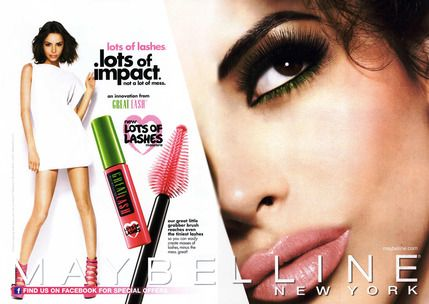Modern advertising occupies an important place in the socio-cultural space and plays an increasingly prominent role in shaping the value priorities of society. This imposes on it almost the same responsibility that was assigned to painting in modern times and sculpture in Ancient Greece. Advertising forms a picture of the world in which a person not only makes purchases and political choices but also decides what aesthetic ideals to focus on. Advertising visuals depict not only an idealized product,but visualize the idea that the advertiser expects to create in the audience. Today, the daily flow of advertising is dominated by idealized visual images of the product, as well as images of those emotions that should be linked to the product in the mind of the buyer.
The example of lash mascara image demonstrates how advertisement can convey the concept of an idealized form. This ad demonstrates an unrealistic image of eyelashes that are artificially lengthened and compacted. This is the example of promotional advertising, in which the main advantages of the product and its positive qualities are emphasized. The purpose of this ad is to stimulate the target audience to buy this mascara and increase sales. It uses an idealized form that is beyond reality to convey its message and put emphasis on beauty. It instills a certain attitude towards reality and forms a social aesthetic ideal.
Being the main instrument of the consumer society, advertising needs a person, first of all, as a consumer. The human need for the perception of harmonious, holistic, and consistent aesthetic images has certain anthropological prerequisites. Every person has a generic feeling of striving for beauty. The pursuit of harmony, based on the inherent human desire for perfection, is one of the essential foundations of human existence in the world. Perceiving positive, aesthetically expressive advertising, a person receives satisfaction, thereby accumulating a positive aesthetic experience.
